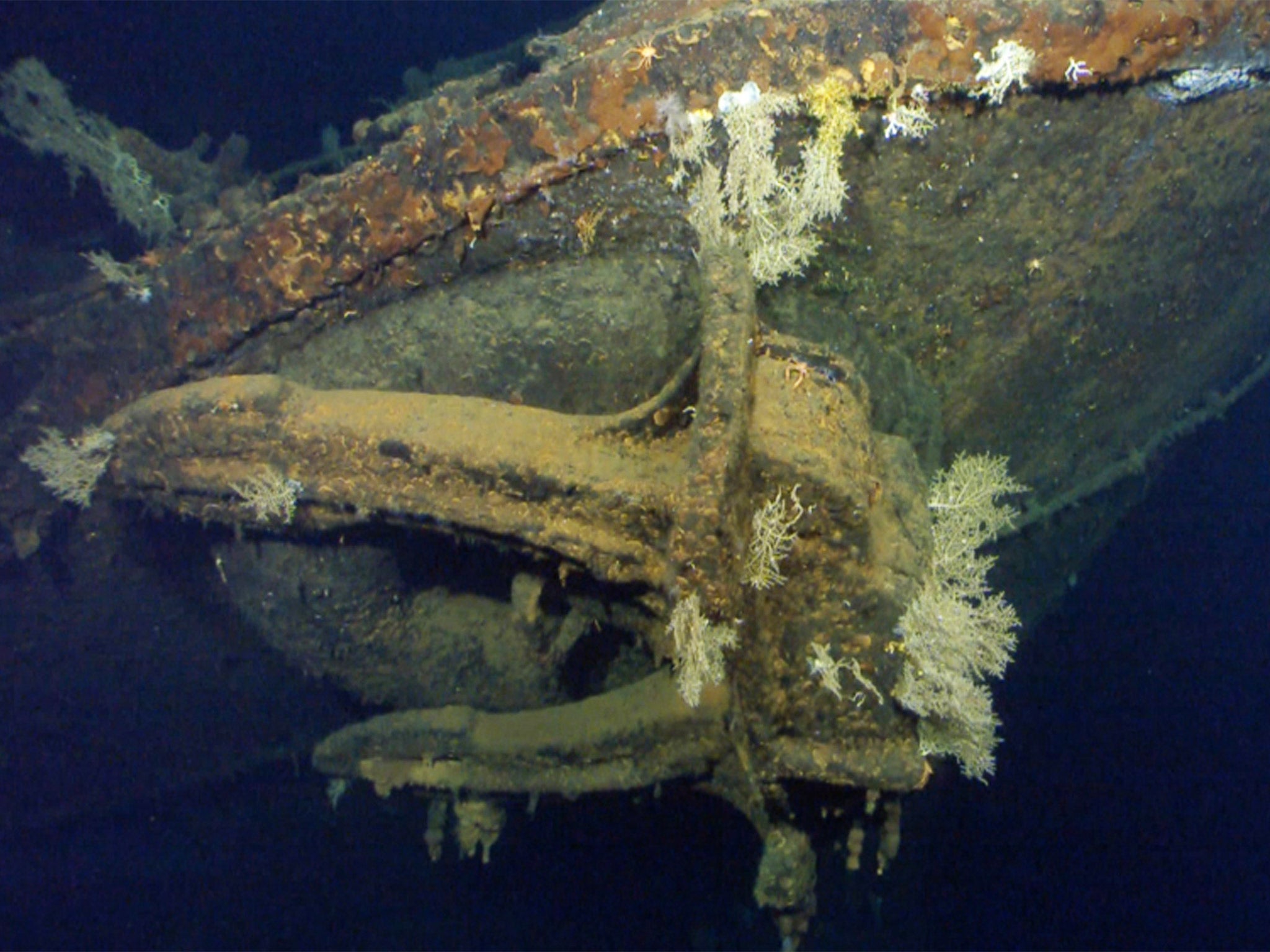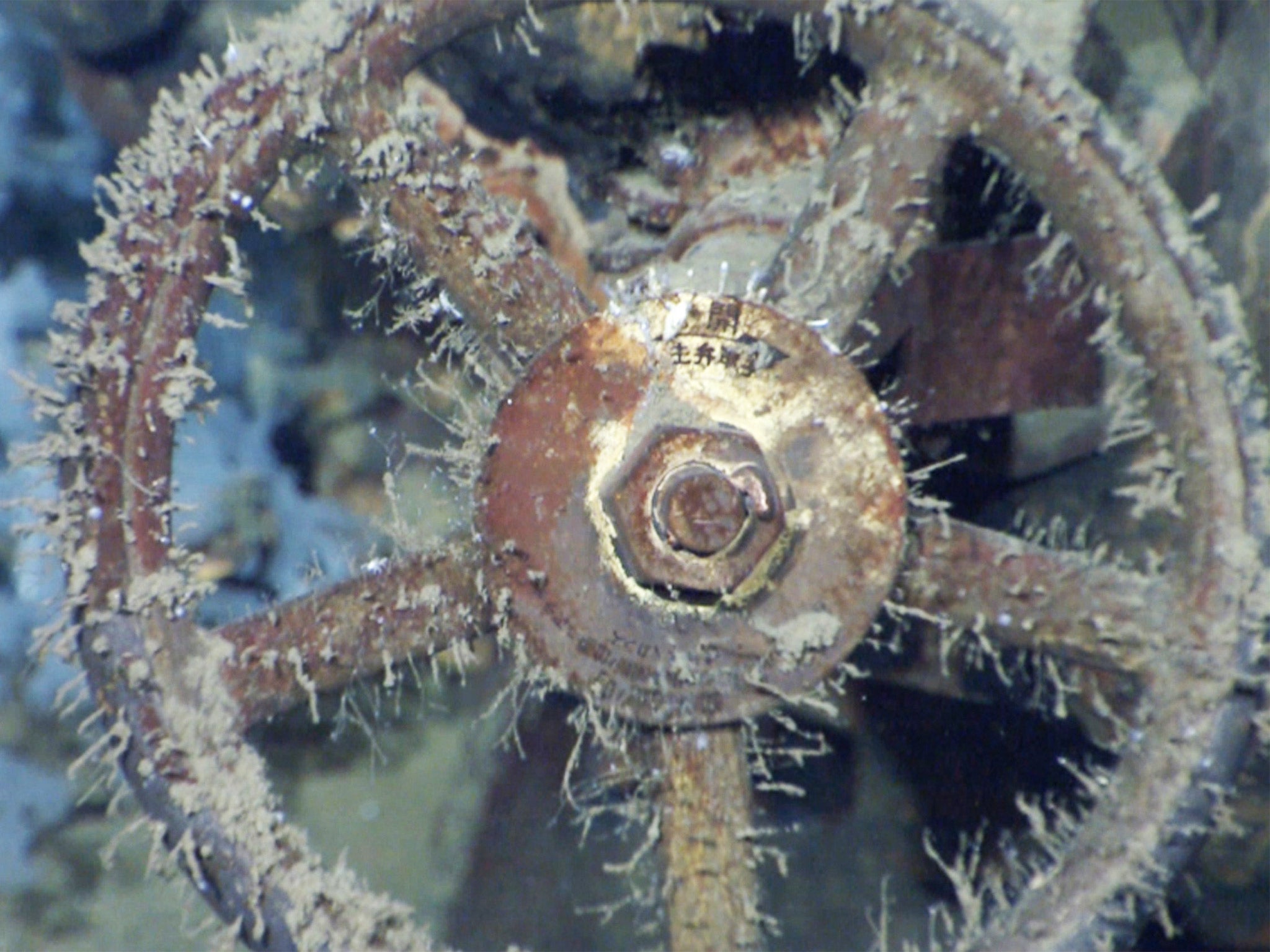Microsoft co-founder Paul Allen 'discovers wreck of Japan's biggest warship off coast of Philippines'
Photos taken by US billionaire's exploration vessel thought to show the Musashi, sunk by US forces in 1944

It was a ship that would represent the might of the Japanese navy, one of the largest battleships ever constructed – weighing a colossal 73,000 tons when it was fully loaded.
Now, more than 70 years since the vessel sank during the Second World War – the billionaire Paul Allen claims to have found it, at a depth of more than a kilometre (3,280ft) on the floor of the Sibuyan Sea off the Philippines.
Mr Allen, the co-founder of Microsoft who is said to be worth around $17.5bn (£11.5bn), and the team aboard his yacht M/Y Octopus found the ship more than eight years after their search began.
Detailed images captured by a high-definition camera mounted on an underwater probe confirmed the wreckage as that of the Musashi, a statement from Mr Allen said. Video and still images showed a valve wheel with Japanese letters, a catapult system used to launch planes, a gun turret, and one of the ship’s two 15-ton anchors. He said the team also found the ship’s bow.
The team found the battleship on the third dive of its underwater vehicle after narrowing the search area with detailed undersea topographical data and other locator devices. They also used historical records from four countries.

“The Musashi is truly an engineering marvel and as an engineer at heart, I have a deep appreciation for the technology and effort that went into its construction,” Mr Allen said.
He said he became fascinated with Second World War history after being inspired by his father’s service in the US Army, and that he was “honoured” to play a part in finding a key vessel in naval history.
The Musashi, commissioned in 1942, sank in October 1944 in the Sibuyan Sea during the Battle of Leyte Gulf, losing more than 1,000 of its 2,400 crew members. The ship – which measured more than 800ft and could carry nine 18-inch guns with a range of more than 22 miles – was repeatedly hit by torpedoes and bombs dropped by planes from Allied aircraft carriers.
The naval battle, considered by many to be the largest of the Second World War, crippled the imperial fleet, cut off Japanese oil supplies and allowed the US invasion of the Japanese-held Philippines.

Japanese experts said they were eager to study the images to try to confirm the ship’s identity.
Kazushige Todaka, head of a private museum specialising in the battleship Yamato, Musashi’s sister vessel, said the details in the images matched those of the Musashi, which was the only battleship that sank in the area. “Judging from the location, it must be the Musashi,” Mr Todaka told NHK public television.
Mr Allen, who describes himself as a philanthropist, investor, entrepreneur, author and space pioneer, said he respects the wreckage as a war grave and plans to work with Japan’s government to make sure the site is treated properly in line with Japanese traditions.
Suikokai, an organisation that supports Japanese navy veterans and conducts research in maritime defense, said that if the discovery is confirmed, a memorial service could be held at the site.
Mr Todaka said the findings, especially during the 70th anniversary of the end of the Second World War, were a “great achievement” that could inspire many Japanese to revisit the history of the war.
AP
Join our commenting forum
Join thought-provoking conversations, follow other Independent readers and see their replies
Comments
Bookmark popover
Removed from bookmarks